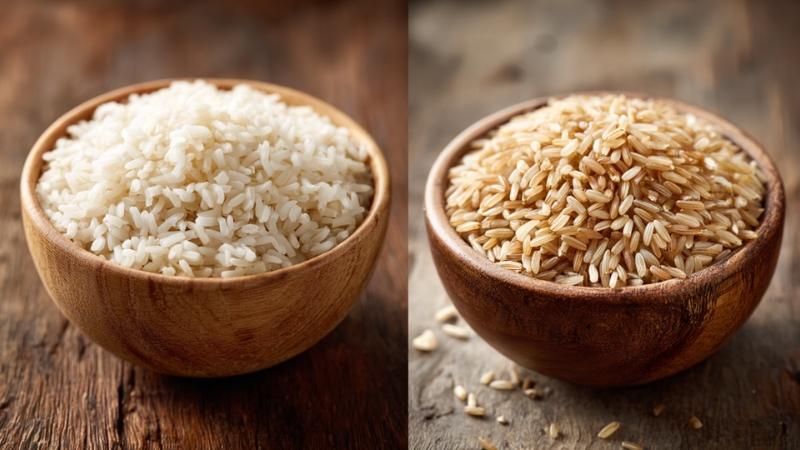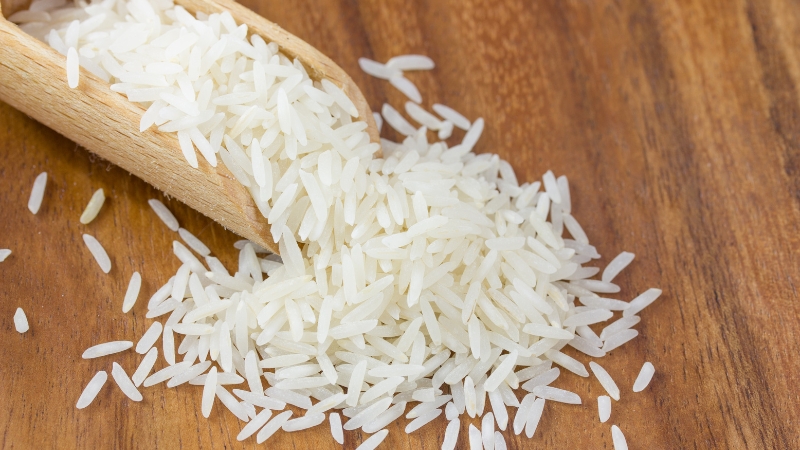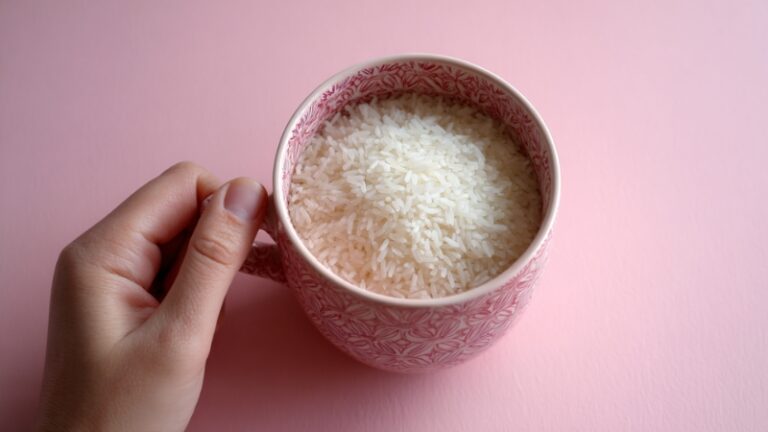Rice is one of the most widely eaten foods on Earth, simple, affordable, and versatile enough to appear in everything from sushi to stir-fries.
But if you are counting calories, portion size and rice type matter more than most people realize.
So, how many calories are in half a cup of rice?
The short, clear answer:
Raw (uncooked) rice, on the other hand, is much denser in calories, about 350–370 calories per half cup, because it hasn’t absorbed water yet.
Let’s break this down in more detail.
Calorie Comparison by Rice Type
The calorie content varies slightly depending on the type of rice, how it’s cooked, and how much water it absorbs. The table below gives an overview:
Type of Rice (Cooked)
Calories per ½ Cup
Carbohydrates
Protein
Fat
Notes
White (long-grain)
103 kcal
22 g
2 g
0.2 g
Most common variety; light, fluffy texture.
White (short-grain)
120 kcal
26 g
2 g
0.3 g
Stickier texture; often used in sushi.
Brown rice
115 kcal
23 g
2.5 g
0.9 g
Higher fiber and nutrients than white rice.
Basmati (white)
105 kcal
22 g
2 g
0.2 g
Lower glycemic index, fragrant aroma.
Jasmine (white)
110 kcal
23 g
2 g
0.3 g
Slightly higher calories, softer texture.
Wild rice
80–85 kcal
17 g
3 g
0.3 g
Technically, a grass, high in protein and fiber.
Instant or parboiled
100–110 kcal
22 g
2 g
0.2 g
Varies by brand; slightly more processed.
All values refer to cooked rice, about 125 grams per half cup.
Why the Calorie Count Changes After Cooking
When rice cooks, it absorbs water, expanding to roughly three times its dry volume. That’s why half a cup of uncooked rice (about 90 grams) has three to four times more calories than the same cooked volume.
So:
- ½ cup uncooked rice = ~350–370 calories
- ½ cup cooked rice = ~110 calories
The difference is purely water weight, not lost nutrients. The calorie density just drops because cooked rice has a lot more moisture.
White Rice vs. Brown Rice – Which Is Better for You?

- Brown rice retains the bran and germ, which provide fiber, magnesium, and B vitamins. The fiber helps slow digestion and stabilize blood sugar.
- White rice is more processed, with the bran removed. It digests faster and may cause sharper spikes in blood glucose.
If you’re eating rice frequently, switching to brown, red, or black rice can offer more lasting fullness and nutritional value for nearly the same calories.
Nutrient
White Rice (½ cup cooked)
Brown Rice (½ cup cooked)
Calories
103
115
Fiber
0.3 g
1.8 g
Magnesium
8 mg
43 mg
Vitamin B3 (Niacin)
1.2 mg
2.6 mg
Glycemic Index
~73
~50
How Cooking Method Affects Calories
Different cooking styles alter the calorie count of rice because of fat absorption, moisture changes, and starch chemistry. Here’s a clear comparison:
Cooking Method
Calories per ½ Cup (Cooked)
Main Difference
Nutritional Impact
Boiled / Steamed Rice
100–120 kcal
Absorbs water, no added fat
Lightest option; retains natural nutrients.
Fried Rice
150–180 kcal
Oil or butter is added during frying
Higher fat and calories; tasty but heavier.
Coconut or Butter Rice
180–200 kcal
Cooked with coconut milk or butter
Increases fat and saturated calories.
Rice Cooked and Cooled
~90–105 kcal
Cooling increases resistant starch
Slightly fewer digestible calories; improved gut health.
Why this matters:
When rice cools after cooking, part of its starch turns into resistant starch, a type of carbohydrate that your body digests more like fiber. This means fewer calories are absorbed, and your blood sugar response improves.
Reheating cooled rice doesn’t reverse the effect, so meal prepping rice in advance can actually make it slightly lower in calories.
Still, if you’re closely monitoring calorie intake, plain steamed or boiled rice remains the best option with no oil, no butter, and a predictable calorie range.
Measuring Rice Correctly

Even if you cook it the “light” way, portion size mistakes can easily double your calorie count. A true half-cup of rice is smaller than most people think.
Serving Size
Visual Estimate
Calories (White Rice)
Notes
½ cup cooked
About a cupcake liner
~110 kcal
A balanced serving for one meal.
1 cup cooked
About a tennis ball
~220 kcal
Common at home or small restaurant portion.
1½–2 cups cooked
About a full bowl
330–440 kcal
Typical restaurant or takeout serving.
Reality check:
If you’re dining out, chances are your “side of rice” contains three to four times more calories than the half-cup serving listed on nutrition labels.
To stay mindful, try using a measuring cup at home at least once; it helps train your eyes to recognize what a healthy portion really looks like.
Rice in a Balanced Meal
View this post on Instagram
Rice itself isn’t the enemy of weight loss or fitness goals; the challenge lies in how it’s eaten. The key is to balance rice with protein, fiber, and healthy fats, which slow digestion and prevent blood sugar spikes.
Example of a Balanced Meal:
Food
Approximate Calories
Nutritional Role
½ cup cooked rice
~110 kcal
Complex carbs for energy
1 cup sautéed vegetables
~80 kcal
Fiber and antioxidants
100 g grilled chicken
~160 kcal
Lean protein for muscle repair
Total Meal
≈ 350–400 kcal
Balanced, filling, and nutrient-dense
Compare that to:
Food
Approximate Calories
Nutritional Role
2 cups white rice
~440 kcal
Carbs only, little fiber
Sauce-heavy meat dish
~300–400 kcal
Added fats and sugar
Total Meal
≈ 700–800 kcal
Heavy, unbalanced, calorie-dense
If you want a lighter, higher-fiber option, replace half of your rice with cauliflower rice, lentils, or quinoa. These substitutes boost protein and fiber without adding extra calories.
Bottom Line
@aussiefitness WHAT 100 CALORIES OF WHITE RICE LOOKS LIKE?! 🍚 #rice #calories #weightloss #fatloss #caloriecounting #caloriedeficit #foryoupage #100calories ♬ Goosebumps (Remix) – Travis Scott & HVME
Half a cup of rice contains roughly 110 calories, making it a perfectly reasonable portion for most balanced meals. The trick is not to avoid rice, but to understand how cooking methods and portion sizes affect your intake.
Some health enthusiasts now compare rice to grains like Onyx Sorghum, debating whether it’s truly a superfood or just another trendy alternative.
Steamed or boiled rice keeps calories low. Fried or coconut rice adds flavor but also extra fat. Cooling your rice before eating can even make it a bit lighter in digestible carbs.

